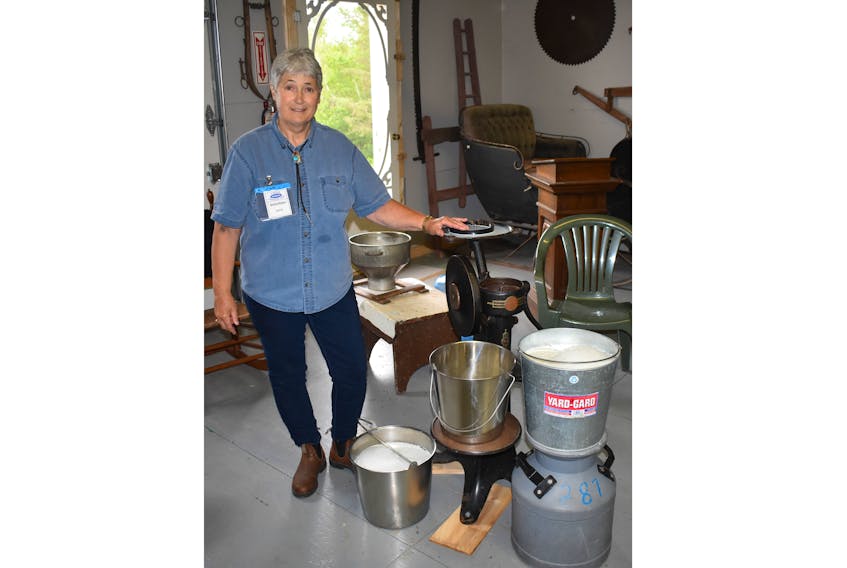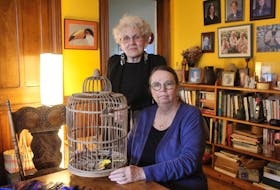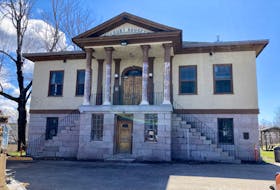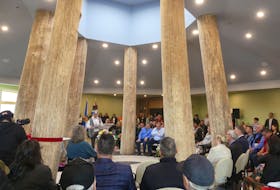SCOTSBURN, N.S. — Jane Morrigan remembers vividly, fresh farm milk delivered to her family's home in glass bottles with cardboard caps on top.
"As the milk froze, it'd push the cream right up. You'd have the cap sitting on top of an inch and a half of frozen cream," she said, laughing a little at the memory.
Saturday, July 13, Morgan was busy at A Walk Through Time Museum where she volunteers sharing a bit of history about the dairy industry and in particular two "game changers."
During two presentations, Morrigan demonstrated the use of an old farm model continuous stream cream separator. The one she used was a hand crank operated model from around 1940. That particular variety would soon be replaced by electric powered models.
"The reason I'm focusing on this cream separator is because it was a game changer," she said. "Before that there was no efficient fast way to separate cream from milk."
A century ago, milking was considered women's work, Morrigan explained. Especially prior to the electric models, the women would pour the milk into the machines and then the children of the household would be responsible for cranking it. Cleaning of the machines after use was a time consuming process as well and typically fell to the women.

Another machine that Morrigan highlighted in her presentation was the Babcock Tester.
"This was used in the dairies and creameries to determine what the percentage of butterfat was in an individual producer's milk or cream," she said. "People weren't always honest in the old days, just like today and so (prior to the Babcock tester) it was impossible to know what the percentage of butterfat was."
With the speed of the cream separation and the quality assurance that the Babcock tester provided, everything changed.
"Those things combined shot the industry into a whole viable enterprise.
The cream industry would change again with the creation of margarine which would replace milk and the development of various kind of milk products such as skim and 2 per cent milk, but right up until 1994, milk was brought from local farms in Pictou County to the Scotsburn Dairy in Scotsburn.
"These days now that we have more sophisticated technology to test milk, it's gone way beyond the Babcock and we can test for every component in milk. We know how much calcium, how much magnesium, how much salt -- how much everything," Morrigan said.
While the way the industry operates may not be the same, Morrigan believes there is a value to looking back and tracing the steps through time.
"I think it's very valuable to know from whence we have come," she said.
A Walk Through Time Museum is located in the former Scotsburn Dairy building at 4119 Scotsburn Road, Hwy 256, in Scotsburn, Pictou County. It is open from 10 a.m. to 5 p.m. from June through September.
LEARN MORE:
Scotsburn man offers A Walk Through Time
look at me go lol 😂
Posted by Taylor Gallant on Saturday, July 13, 2019









